Papers by mohammad ali alizadeh

journal of medicinal plants and by-products, Apr 1, 2015
The chamomile species of Anthemis triumfettii (L.) All is one of important medicinal plant belong... more The chamomile species of Anthemis triumfettii (L.) All is one of important medicinal plant belong to Compositae family and it grows as wild species in Zagros and Alborz Mountains, Iran. The aim of this study was to evaluation of morphological and phenological traits and their relationships with essential oil. Seeds of seven accessions were sown in jiffy pots and transferred to field using randomize block design with three replications in Alborz research station, Karaj, Iran during 2011-12. Data were collected and analyzed for canopy diameter, plant height, flower number, flowering date, maturity date, shoot fresh and dry weight, Essential oil percentage and GDD to flowering and maturity dates. Results showed significance differences for all traits (P<%1) except of essential oil percent. Populations of Gorgan1 and Gorgan2 had higher values for essential oil yield and shoot yield than other populations. Population of Loshan flowered earlier than other population due to low values of its growth degree days (GDD). Simple correlation analysis showed that shoot dry weight was positively correlated with shoot fresh weight, canopy diameter, flower number, and negatively correlated with flowering and maturity date. Essential oil content was positively correlated with flower number and negatively correlated with flowering and maturity date. Results of stepwise regression analysis for essential oil% as dependant variables and other traits as independent variables showed negative effects of flowering and maturity date and positive effect of canopy diameter on essential oil content. Similarly, for essential oil yield as dependent variables, the shoot dry weight, essential oil%, flowering date and GDD were entered in final regression equation. The results of path analysis showed that maturity date had negative direct effect on oil%. In contrast, both Shoot dry weight and essential oil% had positive and direct effect on oil yield.
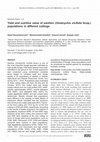
Sainfoin (Onobrychis vicifolia Scop.) is one of the most important forage legumes cultivated as h... more Sainfoin (Onobrychis vicifolia Scop.) is one of the most important forage legumes cultivated as high quality forage and 53 species have been identified in this genus in Iran. A field experiment was conducted using randomized complete block design to compare yield and forage quality of 20 populations of sainfoin in Isfahan Agricultural and Natural Resources Center, Iran during 2013 – 2014. Populations were evaluated at three cutting (29 April, 20 July and 26 October, 2014). Dry matter yield and forage quality indexes such as crude protein (CP), water-soluble carbohydrates (WSC), neutral detergent fiber (NDF), acid detergent fiber (ADF), dry matter digestibility (DMD), and ash content were determined. Results showed that populations were different in the majority of traits. Means of interaction effects indicated that maximum and minimum dry matter yield were 5612.7 Kg ha-1at the third cutting and 118.5 kg ha-1at the first cutting in 8199 and 9263, respectively. According to results of...
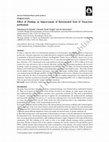
In order to study the effect of of hormo/osmo priming on seed emergence and seedling growth of Ta... more In order to study the effect of of hormo/osmo priming on seed emergence and seedling growth of Tanacetum parthenium, a factorial experiment was conducted based on completely randomized design with three replications in greenhouse of Research Institute of Forests and Rangeland, Tehran, Iran in 2015. The factors were A) four conservation methods with foure levls including: 10 to 15 years old seeds perserved in active collection (4°C) and base collection (-18°C) deteriorated seeds using artificial accelerated ageing (40 °C, 98% of RH for 48 h) and control (two years old seeds in store as normal collection), and the factor B) priming treatments with six levels including: control (no priming), two osmopriming using PEG (-0.3 and -0.6 Mpa), two hormonal priming using Giberlic acid (GA500 and GA1000ppm) and hydropriming (imbibition with distilled water). The results showed that the highest values of emergence percentage, vigor index, root length, seedling length, seedling dry weight were...

Romanian Agricultural Research, 2014
The present study was carried out to evaluate herbage yield, agronomic traits and powdery mildew ... more The present study was carried out to evaluate herbage yield, agronomic traits and powdery mildew disease and their relationships in 35 populations of Sainfoin (Onobrychis sativa L.) across five environments of Iran (Tabriz, Sanadaj, Khoramabad, Zanjan and Samirom)) over 2 years (2010-2011). The experimental layout was a randomised complete block design with three replications. Data were collected for total annual dry matter (DM) yield, flowering date, plant height, stem number, leaf to stem weight ratio (LSR), growth condition, disease infection (DI) and disease severity index (DS). Combined analysis of variance across five environments showed significant differences among locations for all traits except growth condition (P<0.01), and among populations for all of traits except LSR and populations x location for all of traits (P<0.01). In comparisons among populations, Polycross, Esfahan, Faridan, Khomin2, Faridonshar1 and Miandoab with average values of 5.00 to 5.75 ton ha -1 ...

Tropical Grasslands-Forrajes Tropicales, 2021
In order to evaluate resistance of sainfoin (Onobrychis viciifolia) to powdery mildew, seeds of 1... more In order to evaluate resistance of sainfoin (Onobrychis viciifolia) to powdery mildew, seeds of 19 accessions were collected from different parts of Iran and sown at 4 locations, i.e. Kheirabad, Khoramabad, Semirom and Tabriz, in 2014. Accessions were evaluated for powdery mildew severity index (DSI), forage dry matter yield (DM), dry matter digestibility (DMD) and crude protein (CP) and water soluble carbohydrate (WSC) concentrations over 4 years. Based on Duncan’s test, accessions 15353 and 3001 showed disease severity index lower than 25% and were nominated as resistant to powdery mildew. Accessions Oshnavieh and Polycross were considered semi-resistant due to their DSI ranging from 25 to 50%. Other accessions were considered susceptible because their DSI was higher than 50%. The resistant accessions (15353 and 3001) with average yields of 3,341 and 3,304 kg DM/ha were ranked as having high DM production, in addition to displaying high DMD plus high CP and WSC concentrations. Sev...

Journal of Medicinal plants and By-product, Apr 1, 2017
Chamomile (Matricaria chamomilla L.) is a widely used medicinal plant possessing several pharmaco... more Chamomile (Matricaria chamomilla L.) is a widely used medicinal plant possessing several pharmacological effects due to presence of active compounds. In order to study of seed priming effects on seedling growth of chamomile, an experimental design, based on randomized complete design with three replications was conducted under greenhouse conditions in Research Institute of Forests and Rangelands in 2014-2015. Experimental factors were A) three chamomile accessions as code of gene bank 8959 (Brojen), 15123 (Arak) and 23879 (Isfahan), B) five conservation methods including: medium-term storage (active cold room 4 C for 15 years), long-term storage (basic cold room-18 C for 15 years), regenerated seeds in open storage 22 C for 2 years (Control) and aged seed under accelerated ageing (40 C,98% of relative humidity for 48 and 72h) and C) priming treatments including: without priming /(control), osmopriming (PEG-0.3Mpa), hormonal priming (Gibberllic acid 250 and 500ppm), hydropriming (imbibition with distilled water). Data collected for seed emergence percent, root and shoot length, seedling length, vigor index, seedling weight and three Proxidase, Catalase and Super Oxid Desmotaz (SOD) enzymatic activities. Variance analysis showed significant effects of all factors and their interactions except accession by conservation interaction effects for seedling length (P<0.01). Result showed that that accession two accessions 23789 (Esfahan) and15123 (Arak had higher mean values than one other accessions for most of the traits in both medium-term and long-term storage. For aged seeds, the higher root length, seedling length mean values were obtained in 48h accelerate aging test. In comparisons between priming treatments, the higher means of traits were obtained in osmopriming except germination percent. For enzymes activity the trends of accession were not similar but the effect of osmopriming on catalase activity were high and stable in three accessions. The result of priming by conservation interaction showed that the higher seed emergence was obtained in regenerated seeds (control). The higher root length was obtained in accelerated aging test by application of all of priming treatments except hydropriming. For vigor index, hormonal priming (GA250) had higher effect followed by osmopriming. Similarly, for enzymatic activities GA500 had significant impact on proxidas and catalase. It was proved that two priming technique Osmo-priming using (PEG) and hormonal priming (Gibberllic acid) were effective method for recovery of aged seed.

The genus AnthemisL. (Asteraceae) as medicinal plants are used both for pharmaceutical purposes a... more The genus AnthemisL. (Asteraceae) as medicinal plants are used both for pharmaceutical purposes and in folk medicine. In order to study of seed priming effects on seedling growth of two species of Anthemis spp., an factorial experiment based on randomized complete design with three replications was conducted under greenhouse conditions in Research Institute of Forests and Rangelands in 2014-2015.A factorial experiment consisting three factors: 1) two species including Anthemis tinctoriaL. and Anthemis triumfettii (L.) DC. which formed the three levels of factor A, and 2) five conservation methods including: medium-term storage (active cold room 4 °C for 10 years), long- term storage (basic cold room-18 °C for 10 years), regenerated seeds in open air 22 °C for 2 years (Control) and aged seed under accelerated ageing )40 °C,98% of Relative humidity) for 48 and 72h made up the five levels of factor B, and 3) five priming treatments were including: Control (without priming), osmopriming...
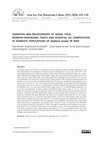
Acta Scientiarum Polonorum Hortorum Cultus, 2020
The present study was carried out to evaluate aerial yield, agronomic traits, essential oil produ... more The present study was carried out to evaluate aerial yield, agronomic traits, essential oil production, and their relationships in 21 populations of Ziziphora tenuior in Karaj, Iran over two years (2016–2017). The experimental layout was a randomized complete block design with three replications. Data were collected for GDD (Growth Degree Days), plant height, canopy area, stem number, flower number, aerial fresh yield, aerial dry matter (DM) yield, seed yield, essential oil percentage and oil production. The essential oil compositions were detected in accession 2929 (Tassoj) using GC/MS. Result of combined analysis of variance across two years showed significant differences between years, populations and population x year interaction for all traits (P < 0.01). In comparisons among populations, the population of Avaj and Ijroud with average values of 13.5 and 14.33 g/p had higher aerial dry yield and other agronomic traits followed by Meshkin2 and 3. For seed yield, Ormieh with av...
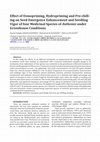
Bulletin of University of Agricultural Sciences and Veterinary Medicine Cluj-Napoca: Horticulture, May 29, 2014
In this study, the effects of six different treatments on enhancement the emergence of species of... more In this study, the effects of six different treatments on enhancement the emergence of species of Anthemis seeds were studied, an experiment with a factorial randomized complete design in six treatments, three replications of four species was conducted in the greenhouse in Research Institute of Forests and Rangelands of Tehran, Iran. Treatments of seeds included seed priming with potassium nitrate (with concentrations 0.5 and 1 %), gibberellic acid (with concentrations 125 and 250 ppm), distilled water (as control) and pre-chilling (4 °C for 14 days). Comparison of seed germination characteristics and seedlings vigor of four Anthemis species (Anthemis altissima, Anthemis haussknechtii, Anthemis pseudocotula and Anthemis tinctoria) showed that species of A. altissima had higher percentage and speed of emergence, ratio of rootlet length by shootlet length, vigor index, dry weight of seedling and leaf area than three species of Anthemis. The results indicated that seed priming with 125 and 250 ppm gibberellic acid improved emergence percentage (94 %), speed of emergence (18.54 sprout/day) and vigor index (83.29) species of A. altissima. The highest dry weight (358.1 mg) was found in primed seeds with 0.5 and 1 % potassium nitrate species of A. altissima. In conclusion, primed seeds with gibberellic acid and potassium nitrate (osmopriming) improved species of Anthemis germination potential and seedlings growth in greenhouse.

SUMMARY In order to evaluate the sainfoin populations, the powdery mildew disease in different cl... more SUMMARY In order to evaluate the sainfoin populations, the powdery mildew disease in different climatic conditions, 40 populations were cultivated in the research stations including : Zanjan (Zanjan province), Semirom (Esfahan province), Khoramabad (Lourestan province), Tabriz (East Azarbyjan), and Sanandaj (Kordestan province). The infected plants were selected and the fungi of Leveillula taurica was identified as an agent of powdery mildew disease. Results of disease severity index on the populations with natural infection showed that all populations had different degree disease severity index. Combined analysis of variance over locations showed that there were significant differences between locations, populations, populations x locations interaction effects for disease severity index, disease percentage rate and forage yield. Mean comparison of populations showed that disease severity index of two populations including Poly cross and Oshnavieh were as 0 to 25 per cent and both o...
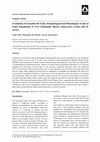
journal of medicinal plants and by-products, 2013
Evaluation of essential oil yield, morphological and phenological traits of seven populations of ... more Evaluation of essential oil yield, morphological and phenological traits of seven populations of two Chamomile species (Matricaria aurea and M. recutita), were carried out using Randomized Completely Blocks Design (RCBD) in three replications in Alborz research station in Karaj, Iran during 2011-2012. Data were collected for 12 morphological and phenological traits. Analysis of variance showed significance difference (P ≤%1) between populations for all of traits. Also the effect of year and year x population interaction effect were significant (P≤%1) for all of traits. Results showed Matricaria recutita hah higher values for all of traits except shoot fresh and dry weight. Mean comparison showed that two populations of Esphahan and Hamadan from Matricaria recutita and one population Gachsaran of Matricaria aurea had high shoot yield and essential oil yield than other populations. Result of simple correlation analysis showed that essential oil percentage was positively correlated wit...
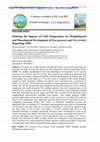
Journal of Rangeland Science, 2013
Poa genus has a high value for grazing and forage conservation concerning thelivestock. In order ... more Poa genus has a high value for grazing and forage conservation concerning thelivestock. In order to study the impacts of cold temperature and Growing Degree Days(GDD) on seedling morphological trait and phonological development of two speciesinvolving Poa pratensis and Poa trivialis, this research was conducted in laboratory andgreenhouse and outdoor of Research Institute of Forest and Rangeland in Tehran, Iran. Theseed samples were moist chilled at 4 °C for two weeks as compared to the control treatment.Samples of both treatments (chilling and control) were transferred into a germinator at20±4°C for 15 days. All the pots were placed in a normal glasshouse at 20±10°C for onemonth. The 30th day age pots have been transferred into the cold rooms at 4°C for two weeks incomparison with control treatment. The seedling vegetative traits were measured same as thelaboratory. For outdoor experiment, half of pots of greenhouse were transferred outdooruntil their flowering and growth stages an...

Acta Agronómica, 2015
In order to study the effect of cold temperature on morphological and quality characteristics of ... more In order to study the effect of cold temperature on morphological and quality characteristics of tall fescue (Festuca arundinaceae), seeds of five populations were provided from natural resource gene bank, Iran as: Bejnord, Esfahan, Brojen, Kamiran and Mashhad were sown on pots with condition of fluctuation temperatures at 20±5°C during day and (5-12)°C during night time in greenhouse. The base temperature (4°C) were applied on 15th days seedling age for 30 days for vernalization compare with control. The pots were return in normal conditions besides control pots in greenhouse and then outdoor. The pots were arranged using factorial experiments based on completely randomized design with three replications. The plants had grown up to their flowering and maturity stage. In flowering stage, morphological traits including: plant height, peduncle length, panicle length, flag leaf area and flag leaf length, fresh and dry weight and seed yield and quality traits as dry mater digestibility (DMD), crude protein (CP), water soluble carbohydrates (WSC), acid detergent fiber (ADF) and total ash (ASH) were recorded. Results showed that populations of Mashhad, and Brojen had higher values for fresh and dry weight than those of other populations. For plant height, peduncle length, flag leaf area the Brojen, Bojnord and Kamyaran had higher values, respectively. For quality traits, the higher values of both DMD (56.5%) and WSC (14.09%) were obtained for Esfahan and higher value of CP (18.1%) for Bojnord. Results also showed that the growth degree days (GDD) of those populations which were subjected to cold treatment was lower flowering stage than those for control. It was concluded that cold treatment had no effect on vegetative developments particularly in seedling stage, but it reduced flowering dates in generative stage and increased plant dry matter yield. It was proved that the Tall fescue is cool season grass and it needs a period of vernalization for promotion of flowering.

TThe seeds of Satureja laxiflora, S.macrantha, S.sahendica and S.macrosiphonia species were colle... more TThe seeds of Satureja laxiflora, S.macrantha, S.sahendica and S.macrosiphonia species were collected from the different regions. The samples were transferred into seed technology laboratory of natural resource gene bank at Research Institute of Forest and Rangeland (RIFR). The different treatments including: pre-chilling (4°C), Gibberlic acid (250 and 500 ppm), Potassium nitrate (2 and 4 percent) and distilled water (control) were used for the seeds samples. In greenhouse experiment, the treated seeds samples were sown in pots by using randomize design with three replications. The seed emergence characteristics including: emergence percentage, emergence speed, length of root and shoot, seedling length, root/shoot length ratio, vigor index, seedling fresh and dry weight, dry/fresh weight were evaluated during 45 days of experiment. The results showed that S. machrantha has higher mean value of seed emergence characteristics to other three species. According to effect of treatment on...
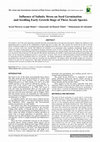
Soil salinity is one of the most important constraints that limit crop production in arid and sem... more Soil salinity is one of the most important constraints that limit crop production in arid and semi-arid regions. Salinity also influences seed germination and it is crucial for the establishment of plants that grow in saline soils. This research was carried out in order to test the effects of different salinity levels on germination and early seedling growth traits of Secale species (Secale montanum, Secale cereale and Secale ceremont). Seed were treated with different salt solutions in an experiment using completely randomized design in three replications and 50 seeds/replicate. Experimental treatment included 6 levels of NaCl concentration (0, 50, 100, 200, 300 and 350 m mol/L). According to results the high levels of seed germination, germination rate, plumule length, and radicle length and seed vigor index were showed at control treatment. In 300 and 350 mM salinity concentration, the number of germinated seeds decreased significantly and there was not showed any germinated seed...
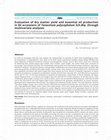
Acta Agronómica, 2018
Para investigar la diversidad y explicar las relaciones del rendimiento de aceite esencial con ra... more Para investigar la diversidad y explicar las relaciones del rendimiento de aceite esencial con rasgos morfológicos, 84 poblaciones de T. polycephalum fueron sembradas en el campo utilizando diseño de bloques completos al azar (BCA) con tres réplicas en el Instituto de Investigación de Bosques y Pastizales, Teherán, Irán en 2013-2014. Los datos fueron colectados para la fecha de floración, días de grado de crecimiento (DGC), número de tallos, altura de planta, rendimiento de materia seca (MS), porcentaje de aceite esencial y rendimiento de aceite esencial. Las relaciones entre las características agronómicas se determinaron mediante correlación, regresión y análisis factorial. La distancia genética y la clasificación del genotipo, se determinaron mediante análisis de conglomerados. El rendimiento de MS se correlacionó positivamente con la altura de la planta, cobertura del dosel, número de tallos y rendimiento de aceite (ρ <0.01), mientras que el% de aceite esencial se correlacion...
Folia Horticulturae, 2016
L. is a genus of aromatic flowering plants in the family Asteraceae and is native to Iran. In thi... more L. is a genus of aromatic flowering plants in the family Asteraceae and is native to Iran. In this research, 62 accessions of four chamomile species including








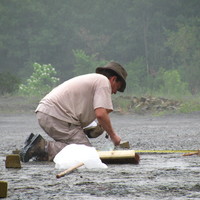

Uploads
Papers by mohammad ali alizadeh